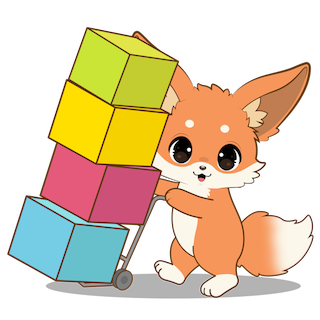Components
Components are data attached to Entities!

Whenever a Component is added or removed, the Entity moves to a new Archetype.
Entities can have ...
- zero or one of each Component Type
- more precisely: of each
TypeExpression: Type and Relation Target
- more precisely: of each
- any number of components
- as long as their
TypeExpressionsare unique. fennecs ensures this!
- as long as their
Some Examples
// Plain Data Components - The most common case
record struct Cash(decimal Amount);
record struct Height(float Meters);
bob.Add<Cash>(new(3.25M)); // bob has $3 and 25 cents (Plain component)
bob.Add(new Height(1.85f)); // bob is 1.85 meters tall (alternate syntax)// All Components can also carry a Relation to another Entity
record struct Owes(decimal Amount);
bob.Add<Owes>(new(10M), alice); // he owes alice $10 (Relation Owes->alice)
bob.Add<Owes>(new(23M), eve); // and owes eve $23 (Relation Owes->eve)
bob.Add<Owes>(new(7M), eve); // ❌ERROR! instead, add the $7 to existing balance
if (!bob.Has<Owes>(eve)) {
bob.Add<Owes>(eve);
}
bob.Ref<Owes>(eve).Amount += 7M;// References can be shared as Plain components between Entities
Bank chase = new("Chase"); // Bank is a class / reference type!
// Many entities can have chase as their bank
eve.Add<Bank>(chase);
bob.Add<Bank>(chase);
bob.Add<Bank>(targo); // ❌ERROR! (bob already has a Plain bank!)// Components can BE an object and be considered a Relation to that Object
// ... as opposed to just "having a bank: chase"
// bob has two Bank relations (each backed a reference to the object)
bob.Add(Link.With(chase)); // bob banks at chase (Type Bank->chase)
bob.Add(Link.With(targo)); // bob also banks at targo (Type Bank->targo)Components may ...
- be added/removed to Entities (single, or in bulk)
- be backed any C# language type
- have an optional Target (secondary key) associated with them
- be shared between Entities (by reference)
- be Queried for and processed by Streams
Archetypes
Archetypes are internal collections of Entities that share the same set of Components.
fennecs is an Archetype-Based ECS
It shares many properties (including strengths and weaknesses) with other ECS of this family. As an ECS user, you never interact with Archetypes directly, but understanding them is helpful to get the most out of fennecs.
By grouping Entities into Archetypes, the ECS (and by extension the CPU) can process them very efficiently.
fennecs constantly ensures that Entities with the same Components are stored tightly packed together in memory, which is a key factor in achieving high performance.



This means that in large projects, there's a performance incentive to make frequently processed Archetypes either rare (e.g. aim for just a few dozen small ones), or chunky and large (e.g. 10k entities for a start, or even more).
There's no practical limit to Archetypes and their sizes. Archetypes can get Compacted or Removed by the World's Garbage Collector.
This is especially true for Archetypes of Relation Targets when the Target despawns - because that Archetype is extremely unlikely to ever get lucky any Entities again.